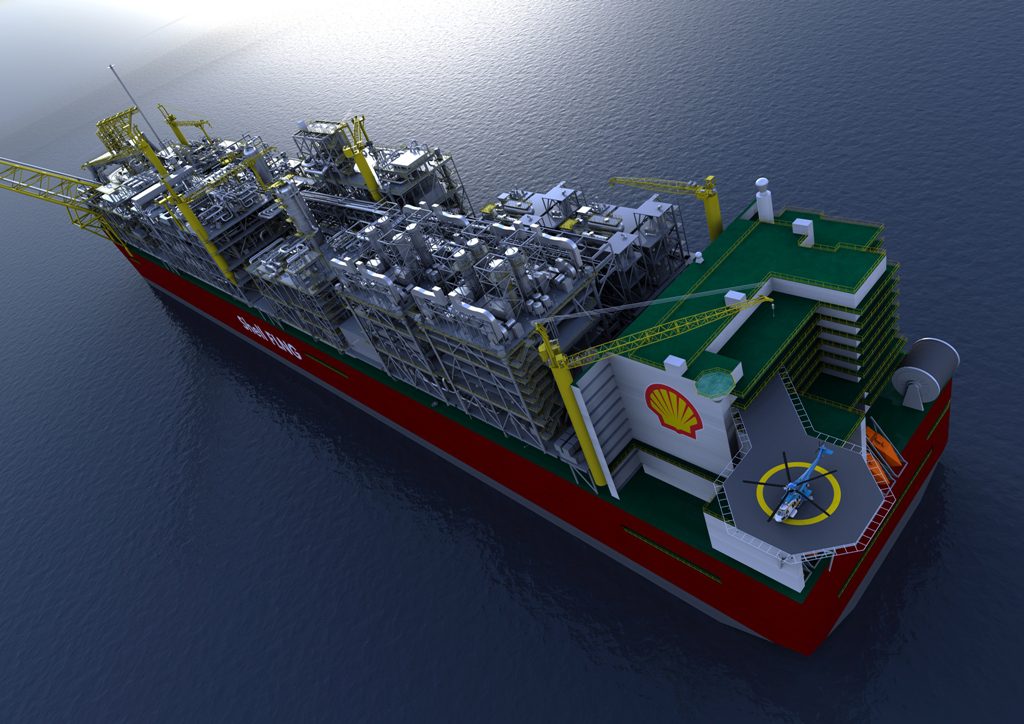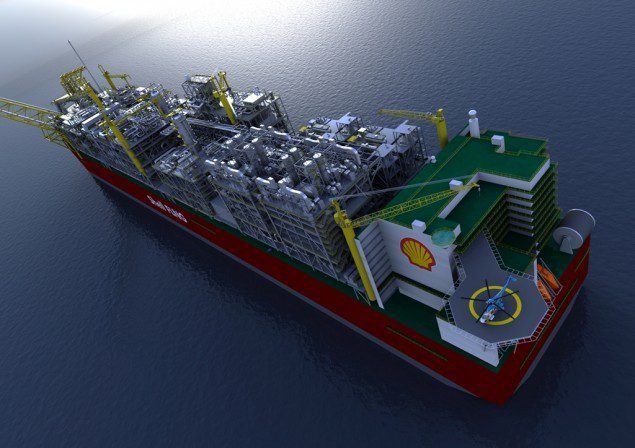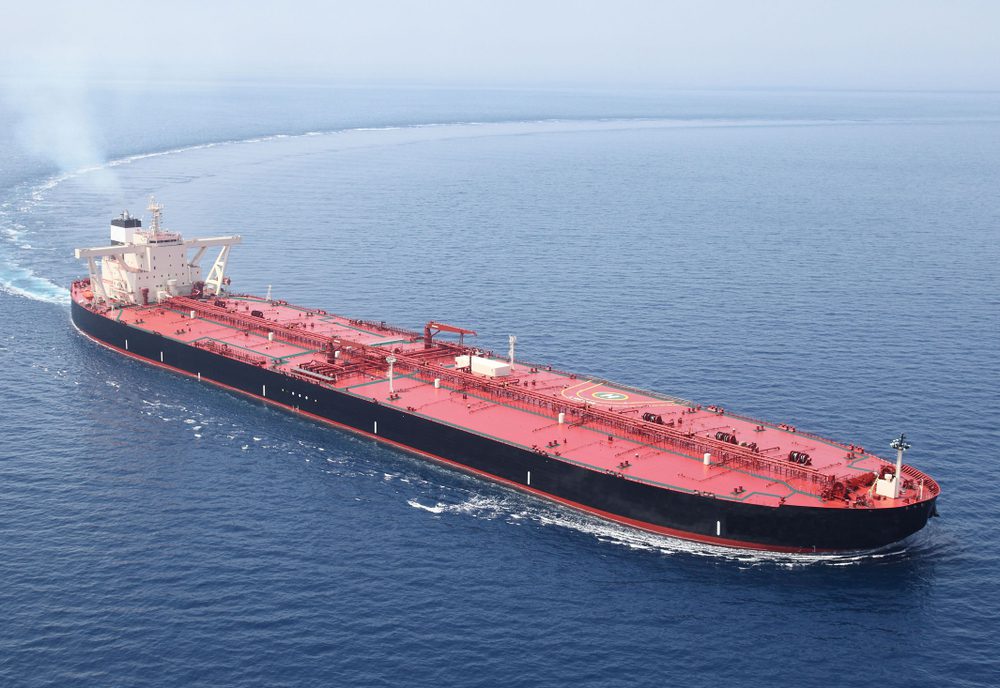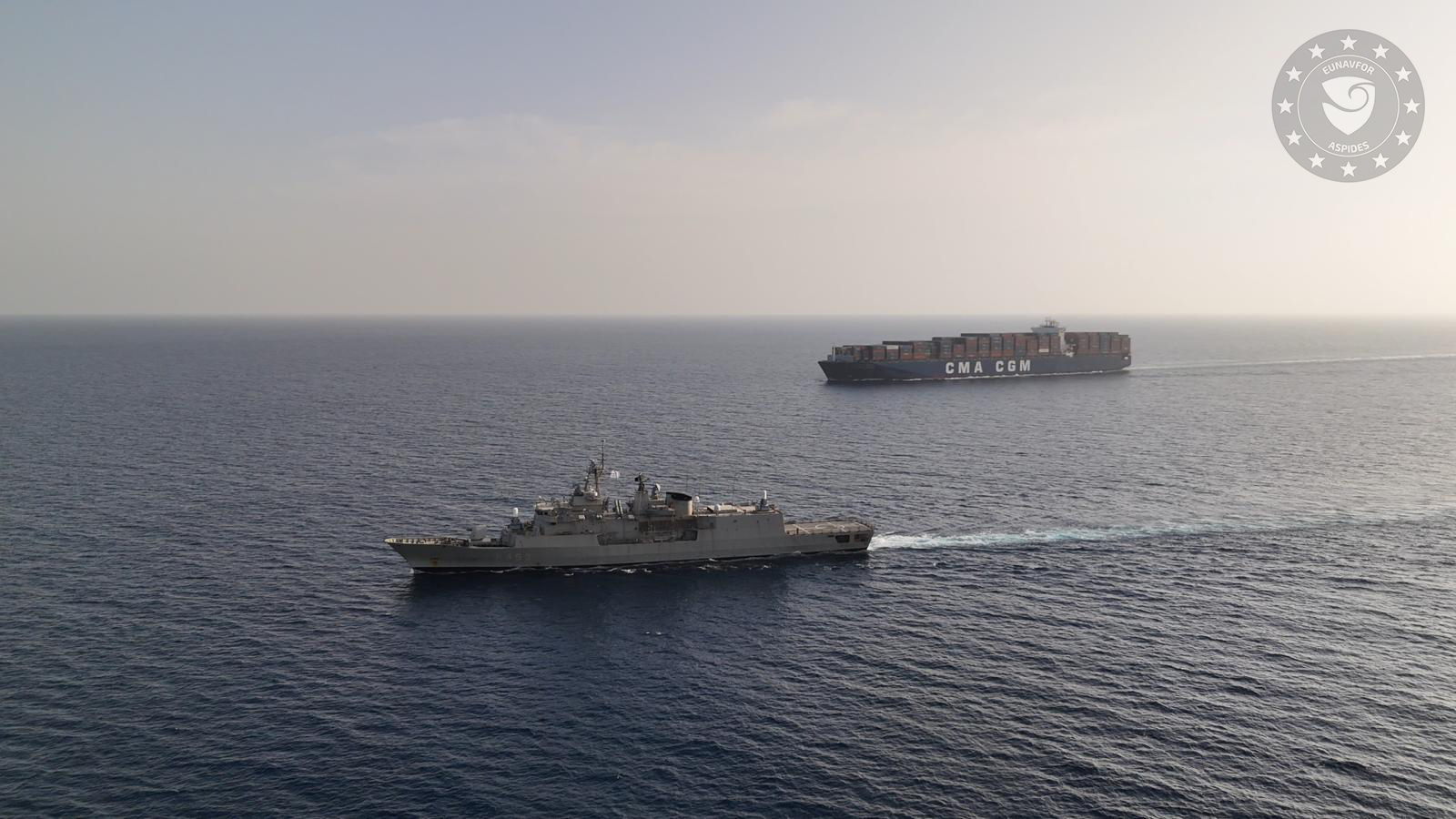Shell will forge the hull of a floating LNG plant in South Korea by year-end that will be the world’s largest vessel, weighing six times the biggest aircraft carrier, a Nimitz-class warship. Some 5,000 workers will build the factory to produce LNG off Australia’s northwest coast in a $13 billion project that also will shield Shell from escalating costs it would have to pay at the country’s onshore plants.
Rivals from Malaysia’s Petroliam Nasional Bhd. to GDF Suez SA of France likewise want to compress gas into liquid at sea, where many of the largest finds were made in the last decade. It’s a generational change for a land-based industry that started about 50 years ago in Algeria, where Shell provided technology for Camel, the first commercial LNG plant. Today those facilities typically cost at least $20 billion to build.
“We remove the need for the pipeline and use about 50 percent of the raw materials for an equivalent onshore plant,” said Neil Gilmour, Shell’s FLNG general manager. He’s overseeing construction of the world’s first floating LNG vessel, which will be as long as the Empire State Building, for use by the Prelude venture partners.
Costs for onshore LNG plants are surging in Australia as it moves to challenge Qatar as the world’s biggest LNG exporter. The U.K.’s BG Group Plc and Woodside Petroleum Ltd. have announced budget overruns at onshore projects in Australia amid rising labor expenses, while Chevron Corp. is reviewing the cost of its A$43 billion ($45 billion) Gorgon venture.
Samsung Shipyard
The Prelude vessel is being built for Shell, Europe’s largest oil company, by Korea’s Samsung Heavy Industries Co. and Technip SA of France. It “will be immune to some of the onshore cost inflation you’ve seen in other projects globally,” Gilmour said. The Anglo-Dutch company, based in The Hague, is already charting the next three vessels aimed at developing stranded gas resources.
The development will broaden the LNG business, which took off around 1959 with the help of a chemical engineer named Cedomir “Cheddy” M. Sliepcevich, the son of an immigrant from Hercegovina to the U.S. He developed a process of shrinking the fuel’s volume 600 times for shipping in tankers.
Global Demand
Demand for LNG will more than double to about 460 million tons by 2025, according to Deutsche Bank AG forecast in August. Floating LNG plants will supply about 3 percent of the fuel. Customers imported about 331 billion cubic meters of LNG last year worth about $170 billion based on an average price in Japan, according to BP Plc and LNG Japan Corp. data.
“There is no doubt about cost pressure in the country,” Shell Chief Executive Officer Peter Voser said in July. “Because that’s being constructed in Korea and therefore we are not exposed to the labor costs actually in Australia.”
Shell, building Prelude FLNG together with Korea Gas Corp., CPC Corp. of Taiwan and Japan’s Inpex Corp., has maintained its cost estimate, said Tony Regan, a Tri-Zen International Ltd. consultant in Singapore.
“We’ve had massive cost overruns in conventional projects, and Shell has stuck with the original budget for Prelude, and I think that’s still realistic,” Regan said.
The oil producer plans to deploy the technology beyond Australia in Europe, Africa and the Americas. The company has been working with Inpex to use FLNG off Indonesia and is negotiating plans off East Timor. Prelude is due to start in about 2017, Shell forecast last year.
Gas in Deep Water
“There is a lot of undeveloped gas in deep water in the world,” Gilmour said. “There are several hundred trillion cubic feet of gas that have already been found.”
Shell may lose its FLNG leadership with competitors catching up. Petroliam Nasional, or Petronas, is moving ahead with plans to build its first floating LNG project due to start in 2015, after Malaysia’s state-owned oil company in June hired contractors to design the plant.
ConocoPhillips is also joining the race to build a floating plant off Australia, Todd Creeger, the company head in the country, said yesterday. “We aren’t building the first, but we’re watching,” he said.
Companies such as GDF Suez and PTT Exploration & Production Pcl also plan floating LNG developments.
GDF Suez expects to make an investment decision at the end of 2014 on whether to go ahead with its proposed Bonaparte venture, Janet Hann, project manager, said today at a conference in Darwin.
Decision Time
Floating LNG technology doesn’t have the same “complexities” of onshore developments, she said. “We are stepping across a new boundary.”
Perth-based Woodside, operator of the proposed Browse LNG venture, may scrap a proposal to build a A$44 billion plant on the coast of Western Australia and pick floating LNG instead, relying on the expertise of one of its partners, Shell, Deutsche Bank said.
That’s because the rising expense of onshore projects “improves the cost differential in favor of FLNG,” John Hirjee, a Melbourne-based analyst at the bank, wrote in an August report.
“We have taken a bigger position in Browse,” Andy Brown, the international director for exploration and production at Shell, said this week in an interview in London. “We are not the operator, so I am not in any position to say how Browse will be developed. We are just one of the players.”
Shell’s stake in Browse provides the project with alternatives, said Peter Coleman, Woodside’s CEO. Woodside and the other Browse owners, including BHP Billiton Ltd., are due to decide in the first half of 2013 whether to go ahead with the plan to develop the Browse LNG plant on land.
‘Catbird Seat’
“We’re committed to the current process,” Coleman said in August. “If it doesn’t work, then we’ve got options.”
BHP and ExxonMobil Corp. are considering floating LNG for their Scarborough field off Western Australia, Mike Yeager, chief executive officer of BHP’s petroleum unit, told reporters in May. The floating platforms would eliminate the costs of building pipelines and jetties, he said.
“It’s something we must know and we must understand,” Yeager said. “It has to be an option.”
Shell’s technology is well-suited for Australia because of the cost pressures and strict environmental regulations for onshore plants, said Noelle Leonard, a FACTS Global Energy consultant in Perth. Few onshore LNG projects may be built in Australia after the seven under construction, she said.
“Shell is in the catbird seat,” Leonard said. “They’ve positioned themselves very nicely with floating LNG.”
Prelude Production
Prelude will produce about 3.6 million metric tons of LNG and 1.3 million tons of gas condensate a year. It will cost between $10.8 billion and $12.6 billion, based on figures Shell provided when it approved the project last year. Shell estimated the cost at about $3 billion to $3.5 billion per million tons of LNG a year.
By contrast, Inpex Corp.’s Ichthys venture, approved in January, is estimated to cost more than $4 billion per million tons, although it will also produce liquefied petroleum gas and condensate. The $34 billion project, expected to have a capacity of 8.4 million tons annually, is the most expensive in Australia, according to Sanford C. Bernstein & Co.
Gilmour declined to give any cost update, referring to Shell’s announcement last year. The next three vessels will be cheaper because “Shell will relentlessly drive improvement of FLNG projects,” he said.
– Eduard Gismatullin and James Paton, Copyright 2012 Bloomberg

 Join The Club
Join The Club












